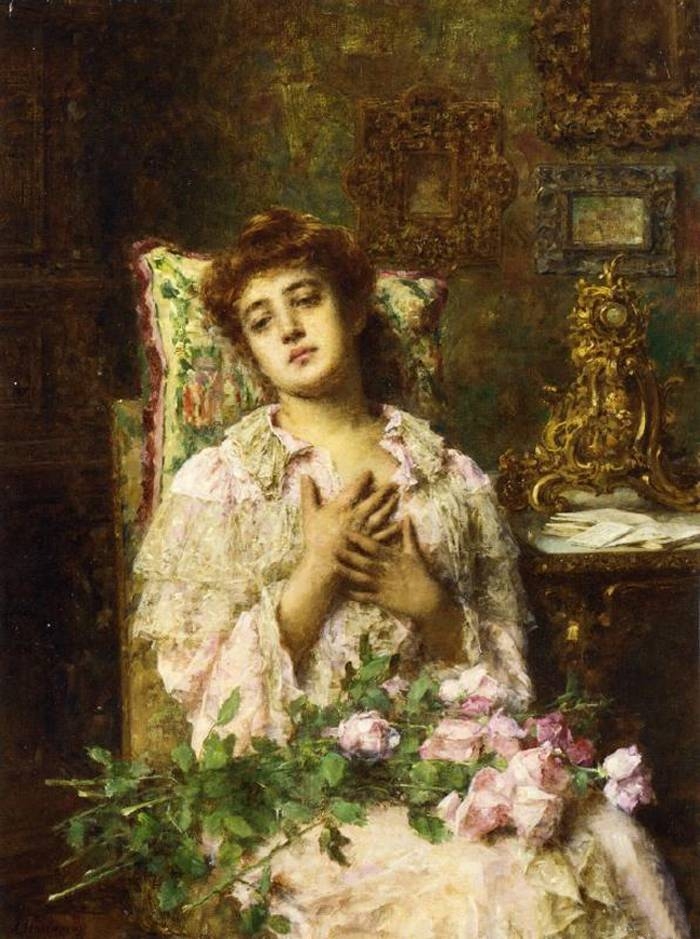BAMBINO
Bambino,
se trovi l'aquilone della tua fantasia
legalo con l'intelligenza del cuore.
Vedrai sorgere giardini incantati
e tua madre diventerà una pianta
che ti coprirà con le sue foglie.
Fa delle tue mani due bianche colombe
e portino la pace ovunque
e l'ordine delle cose.
Ma prima di imparare a scrivere
guardati nell'acqua del sentimento.
~ Alda Merini ~
Bambino,
se trovi l'aquilone della tua fantasia
legalo con l'intelligenza del cuore.
Vedrai sorgere giardini incantati
e tua madre diventerà una pianta
che ti coprirà con le sue foglie.
Fa delle tue mani due bianche colombe
e portino la pace ovunque
e l'ordine delle cose.
Ma prima di imparare a scrivere
guardati nell'acqua del sentimento.
~ Alda Merini ~
I BAMBINI IMPARANO CIO' CHE VIVONO
I bambini imparano ciò che vivono.
Se un bambino vive nella critica impara a condannare.
Se un bambino vive nell'ostilità impara ad aggredire.
Se un bambino vive nell'ironia impara ad essere timido.
Se un bambino vive nella vergogna impara a sentirsi colpevole.
Se un bambino vive nella tolleranza impara ad essere paziente.
Se un bambino vive nell'incoraggiamento impara ad avere fiducia.
Se un bambino vive nella lealtà impara la giustizia.
Se un bambino vive nella disponibilità impara ad avere una fede.
Se un bambino vive nell'approvazione impara ad accettarsi.
Se un bambino vive nell'accettazione e nell'amicizia impara a trovare l'amore nel mondo.
~ Doret's Law Nolte ~
I bambini imparano ciò che vivono.
Se un bambino vive nella critica impara a condannare.
Se un bambino vive nell'ostilità impara ad aggredire.
Se un bambino vive nell'ironia impara ad essere timido.
Se un bambino vive nella vergogna impara a sentirsi colpevole.
Se un bambino vive nella tolleranza impara ad essere paziente.
Se un bambino vive nell'incoraggiamento impara ad avere fiducia.
Se un bambino vive nella lealtà impara la giustizia.
Se un bambino vive nella disponibilità impara ad avere una fede.
Se un bambino vive nell'approvazione impara ad accettarsi.
Se un bambino vive nell'accettazione e nell'amicizia impara a trovare l'amore nel mondo.
~ Doret's Law Nolte ~
RITORNAR BAMBINI
Le cose che il bambino ama
rimangono nel regno del cuore
fino alla vecchiaia.
La cosa più bella della vita
è che la nostra anima
rimanga ad aleggiare
nei luoghi dove una volta
giocavamo.
~ Kahlil Gibran ~
Le cose che il bambino ama
rimangono nel regno del cuore
fino alla vecchiaia.
La cosa più bella della vita
è che la nostra anima
rimanga ad aleggiare
nei luoghi dove una volta
giocavamo.
~ Kahlil Gibran ~
 |
| The Artist and His Model,1875 |
by+Catherine+La+Rose+(94).jpg) Alexei Alexeievich Harlamoff (A.K.A Alexej Harlamoff - Alexej Charlamoff) Алексей Алексеевич Харламов (1840–1925) was born at Saratov, Russia in 1840. He studied at the Academy of Fine Arts in St. Petersburg and won a gold medal and a travel scholarship in 1868 for his painting The Return of the Prodigal Son. This enabled him to go to Paris, where he remained, working with the great portrait painter and teacher at the École des Beaux-Arts, Léon Bonnat (1834-1922). His work was exhibited in the Russian section of the Décennale exhibition of art produced between 1889 and 1900, which was part of the World's Fair held in Paris in 1900.
Alexei Alexeievich Harlamoff (A.K.A Alexej Harlamoff - Alexej Charlamoff) Алексей Алексеевич Харламов (1840–1925) was born at Saratov, Russia in 1840. He studied at the Academy of Fine Arts in St. Petersburg and won a gold medal and a travel scholarship in 1868 for his painting The Return of the Prodigal Son. This enabled him to go to Paris, where he remained, working with the great portrait painter and teacher at the École des Beaux-Arts, Léon Bonnat (1834-1922). His work was exhibited in the Russian section of the Décennale exhibition of art produced between 1889 and 1900, which was part of the World's Fair held in Paris in 1900.In his early career, he painted many genre and religious subjects, learning his skills by copying Old Master paintings such as Rembrandt's Anatomy Lesson in the Mauritshuis in The Hague. He also became a respected portrait painter, with such important sitters as Tsar Alexander II and Prince Demidoff. Perhaps his most beloved subjects were informal portraits of peasant girls. These sitters were painted for their beauty and innocence rather than their fame. Harlamoff eloquently evoked the symbolism of the flower representing the short-lived innocence of youth so popular with artists of the end of the nineteenth century, while capturing a uniquely Russian ambience in the details of dress and facial features. Harlamoff was also interested in the range of emotions within facial expressions; his A girl in a white veil with her charming, contemplative gaze is an excellent example. It was probably the sweet, smiling expressions of his Children playing with Flowers that drew the admiration of Queen Victoria when she saw it in the Glasgow International Exhibition in 1888.
The work of Alexei Harlamoff is represented in the Alexander III Museum in St Petersburg, the Tretiakov Gallery in Moscow and in the Brobinksi Collection.






by+Catherine+La+Rose+(2).jpg)
by+Catherine+La+Rose+(43).jpg)
by+Catherine+La+Rose+(67).jpg)
by+Catherine+La+Rose+(65).jpg)
by+Catherine+La+Rose+(87).jpg)
by+Catherine+La+Rose+(88).jpg)
by+Catherine+La+Rose+(85).jpg)
by+Catherine+La+Rose+(10).jpg)
by+Catherine+La+Rose+(38).jpg)
by+Catherine+La+Rose+(12).jpg)
by+Catherine+La+Rose+(11).jpg)
by+Catherine+La+Rose+(98).jpg)
by+Catherine+La+Rose+(49).jpg)
by+Catherine+La+Rose+(50).jpg)
by+Catherine+La+Rose+(53).jpg)
by+Catherine+La+Rose+(56).jpg)
by+Catherine+La+Rose+(59).jpg)
by+Catherine+La+Rose+(41).jpg)
by+Catherine+La+Rose+(69).jpg)
by+Catherine+La+Rose+(96).jpg)
by+Catherine+La+Rose+(81).jpg)
by+Catherine+La+Rose+(97).jpg)
by+Catherine+La+Rose+(33).jpg)
by+Catherine+La+Rose+(62).jpg)
by+Catherine+La+Rose+(78).jpg)
by+Catherine+La+Rose+(93).jpg)
by+Catherine+La+Rose+(52).jpg)
by+Catherine+La+Rose+(54).jpg)
by+Catherine+La+Rose+(48).jpg)
by+Catherine+La+Rose+(30).jpg)
by+Catherine+La+Rose+(79).jpg)
by+Catherine+La+Rose+(72).jpg)
by+Catherine+La+Rose+(76).jpg)
by+Catherine+La+Rose+(57).jpg)
by+Catherine+La+Rose+(6).jpg)
by+Catherine+La+Rose+(15).jpg)
by+Catherine+La+Rose+(91).jpg)
+by+Catherine+La+Rose.jpg)
by+Catherine+La+Rose+(27).jpg)
by+Catherine+La+Rose+(77).jpg)
by+Catherine+La+Rose+(68).jpg)
by+Catherine+La+Rose+(35).jpg)
by+Catherine+La+Rose+(25).jpg)
by+Catherine+La+Rose+(29).jpg)
by+Catherine+La+Rose+(8).jpg)
by+Catherine+La+Rose+(24).jpg)
by+Catherine+La+Rose+(45).jpg)
by+Catherine+La+Rose+(86).jpg)
by+Catherine+La+Rose+(75).jpg)
by+Catherine+La+Rose+(37).jpg)
by+Catherine+La+Rose+(14).jpg)
by+Catherine+La+Rose+(42).jpg)
by+Catherine+La+Rose+(58).jpg)
by+Catherine+La+Rose+(28).jpg)
by+Catherine+La+Rose+(47).jpg)
by+Catherine+La+Rose+(46).jpg)
by+Catherine+La+Rose+(89).jpg)
by+Catherine+La+Rose+(66).jpg)
by+Catherine+La+Rose+(55).jpg)
by+Catherine+La+Rose+(32).jpg)
by+Catherine+La+Rose+(5).jpg)
by+Catherine+La+Rose+(16).jpg)
by+Catherine+La+Rose+(9).jpg)
by+Catherine+La+Rose+(7).jpg)
by+Catherine+La+Rose+(13).jpg)
by+Catherine+La+Rose+(20).jpg)
by+Catherine+La+Rose+(21).jpg)
by+Catherine+La+Rose+(23).jpg)
by+Catherine+La+Rose+(19).jpg)
by+Catherine+La+Rose+(31).jpg)
by+Catherine+La+Rose+(64).jpg)
by+Catherine+La+Rose+(90).jpg)
by+Catherine+La+Rose+(82).jpg)
+by+Catherine+La+Rose+(102).jpg)
by+Catherine+La+Rose+(83).jpg)
by+Catherine+La+Rose+(71).jpg)
by+Catherine+La+Rose+(95).jpg)
by+Catherine+La+Rose+(51).jpg)
by+Catherine+La+Rose+(80).jpg)
by+Catherine+La+Rose+(92).jpg)
by+Catherine+La+Rose+(74).jpg)
by+Catherine+La+Rose+(73).jpg)
by+Catherine+La+Rose+(84).jpg)
by+Catherine+La+Rose+(63).jpg)
by+Catherine+La+Rose+(26).jpg)
by+Catherine+La+Rose+(61).jpg)
by+Catherine+La+Rose+(60).jpg)
by+Catherine+La+Rose+(70).jpg)
by+Catherine+La+Rose+(44).jpg)
by+Catherine+La+Rose+(39).jpg)
+by+Catherine+La+Rose+(101).jpg)
by+Catherine+La+Rose+(17).jpg)
by+Catherine+La+Rose+(18).jpg)
by+Catherine+La+Rose+(22).jpg)
Nessun commento:
Posta un commento
Info sulla Privacy